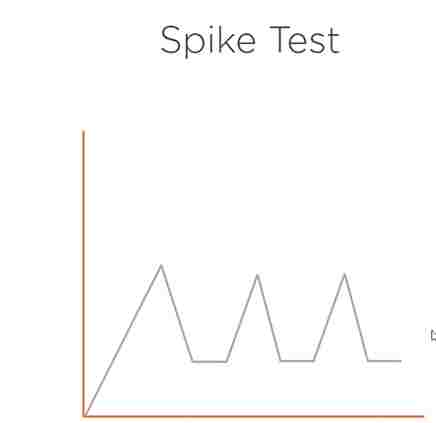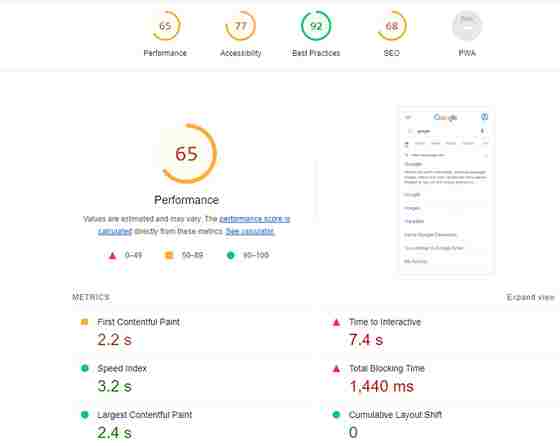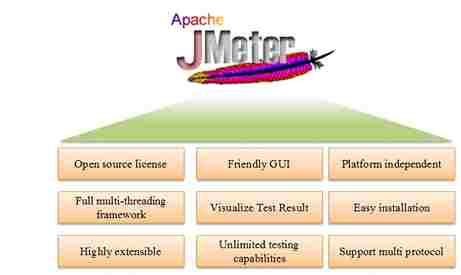Introduction
Before talking about Best Performance Testing Tools for Web Applications. it is important to understand the concept of Performance testing. A non functional type of testing is to tests how an application or resource performs under a given load to see its impact. An application’s performance is measured in terms of its response time, throughput, and resource utilization under a given workload.
Performance testing is done after functional testing. It should start early and continue through the whole development process.
What is Web Application Scalability?
Scalability refers to
- an application’s ability to handle additional workload
- Without adversely affecting performance
- by adding additional resources such as processors, memory, and storage.
What should we measure?
In order to measure the performance of a website look for the following metrices.
Response Time
Response Time = Request Time + Processing Time + Response Time
It depends on the complexity of the request, hardware, and network latency, the time it takes to travel the data over the network. The Less the Better. Few other importance terms related to to response time are.
- Time To First Byte (TTFB)
- Total Page Response Time (Time to Last Byte, TTLB)
- Latency – Time to first byte, latency is a field in the view results in table listener.
The Less the Better.
Throughput
The number of transactions (Request/Response) or Number of K (bytes) sent or received / Unit of Time (MS or seconds)
The More the Better.
Reliability
How good the application is at handling errors, e.g. No of errors/ no of request.
Number of Errors Request/Number of Total Requests or Error/Sec
The Less the Better.
Server Metrices
What should we measure? (Resource Utilization, per Server)
- CPU
- Memory
- Disk/ Network
Types of Performance Testing
Performance testing is categorized in the flowing types.
Performance Test
Determine or validate the speed of the application
Smoke
Test with light load say just with one user to verify the test works correctly.
Load Test
Determines how an application’s performance varies as load increases.
Stress Test
Determines application behavior when pushed beyond normal or peak load conditions.

Spike
Spike testing is a type of performance testing in which an application receives a sudden and extreme increase or decrease in load. It is performed to check the robustness of the application. (System robustness is defined as a system’s ability to remain functioning under disturbances)

Endurance Testing
It is a non-functional type of software testing where software is tested with a high load extended over a significant amount of time to evaluate the behavior of software applications under sustained use. E.g., Memory Leakage, Connection closure (different layers or database), and Response time.

Baselines and Benchmarks
A baseline is a set of performance data related to a given configuration of the application being tested.
- Used for comparison
- Full System or components
Benchmarking is an assessment of an industry standard, best practice, or competitor.
Benchmark Testing: Benchmark testing is used to test and verify the application’s performance against industry standards
Defining performance requirements.
Requirement elicitation is important while performing performance testing. e.g.
- The average/maximum response time should be_____ (Response time)
- The System should be able to support _ pages per second. (Application characteristics)
- The System should be capable of supporting at least __ users per hour (Specific load)
Example, Search Page - The search page should respond to a search request for a random term that exist in the article database within 2000 ms.
- With database CPU utilization of under 20% and web server CPU utilization of under 10%.
- And Much more.
Performance Testing Process
- Design and build tests
- Prepare the test environment
- Run the tests
- Analyze the results
- Optimization
- Retest
Few Best Performance Testing Tools for Web Applications
- Lighthouse development plugin
- FireBug, and Fiddler
- Google Chrome Speed Tracer
- LoadRunner
- JMeter
Lighthouse
Lighthouse is an open-source, automated tool for improving the performance, quality, and correctness of your web apps. Its reports look like below.

Fiddler
Following are the techniques that should be adopted to achieve the performance of the web application.
- HTTP compression
- Content expirations
- Content Delivery Network (CDN)
- Minification
- Image optimization
Fiddler is a debugging proxy server tool used to log, inspect, and alter HTTP and HTTPS traffic between a computer and a web server or servers. Fiddler helps us validate the above techniques either implemented or not.
JMETER
JMeter is an open-source performance testing tool used for load testing, stress testing, and measuring the performance of web applications and services. It allows testers to simulate multiple users, requests, and scenarios to evaluate how an application handles varying levels of load and stress. JMeter provides detailed reports and analysis to identify performance bottlenecks and optimize web applications.

Vist this blog to further lear performance testing using Jmeter.
Conclusion | Best Performance Testing Tools for Web Applications
Summing up, this blog provides a comprehensive overview of performance testing, including metrics, types, and a detailed exploration of various testing tools. It underscores the importance of evaluating an application’s performance under different conditions and loads, offering valuable insights for testers of all levels. Whether you’re a novice or an experienced professional, this blog serves as an invaluable resource for enhancing your understanding of performance testing and optimizing application performance.

